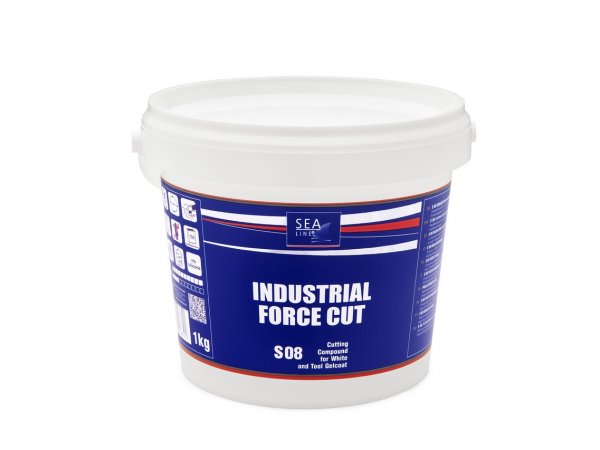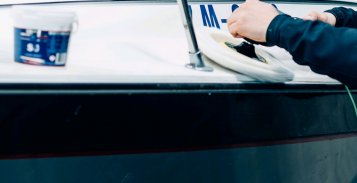
We starting new year with new product – polishing compound S08 INDUSTRIAL FORCE CUT.
Why S08 INDUSTRIAL FORCE CUT ?
This polishing compound have one the highest cut level, it allows to remove defects after using sand paper P600. It can be used on hardest surfaces, finished products made of laminate and for molds. Polishing compound will be especially used for light-colored surface.
For whom S08 INDUSTRIAL FORCE CUT ?
S08 INDUSTRIAL FORCE CUT was designed for manufacture which want to in fast way prepare products for next stage of productions.
Advantages S08 INDUTRIAL FORCE CUT :
All details about product are HERE (click)

Sorry, this entry is only available in Polish.

Come and join us at METSTRADE 2023, METSTRADE the best event for marine industry professionals, happening from November 15th to […]

Visit us and our production plant without traveling

New in the 2023 season is a new polishing wool The new black and white polishing pads in premium quality […]
If the scratches are not deep, then we can renew the scratched side by polishing with Sea-Line polishing pastes. Above the waterline, when the scratches are not deep, the surface can be repaired with a DRY FAST gel coat filler. Deep scratches should be filled with epoxy filler (selected depending on the requirements of the scratched surface), painted with a primer and then painted with topcoat.
Sea-Line HARD and Sea-Line self-polishing antifouling are not intended for aluminum surfaces. They include copper oxide, which in contact with aluminum causes galvanic corrosion. Especially on aluminum, we offer ALU-PLUS self-polishing anti-fouling paint, which, in addition to excellent adhesion to aluminum, is also 30% more effective than traditional anti-fouling paints.

Refilling and to tackle inequalities caused by damage to or during the course of production

Protects boat surfaces from the effects of destructive activities osmosis and corrosion

Provide an aesthetic and a perfect look of the boat also protective against water and UV radiation

Protect the hull from fouling with algae and shells

Effectively remove scratches, refresh the color of gelcoat or paint, fast shine effect

Special preparations for effective cleaning and refinishing

Laminating, gluing and filling in cracks in gelcoat

Range of products useful in the boat builder work